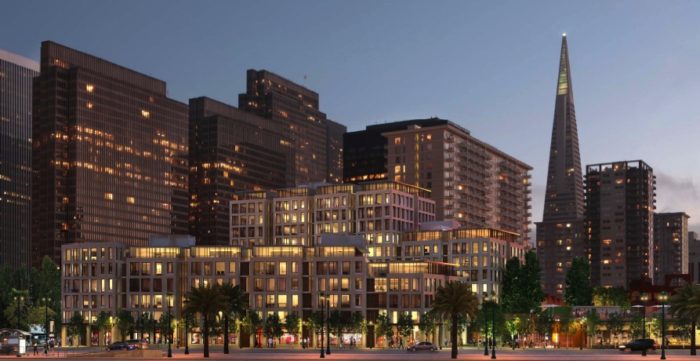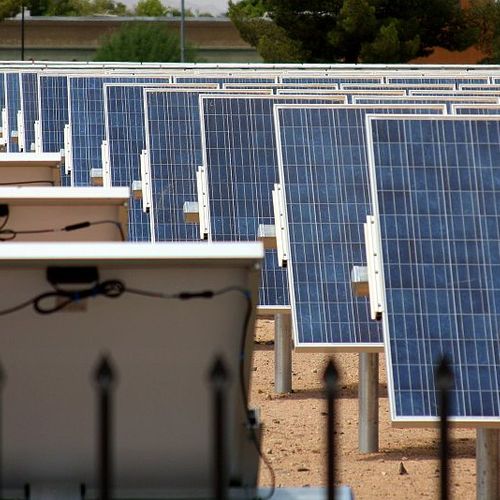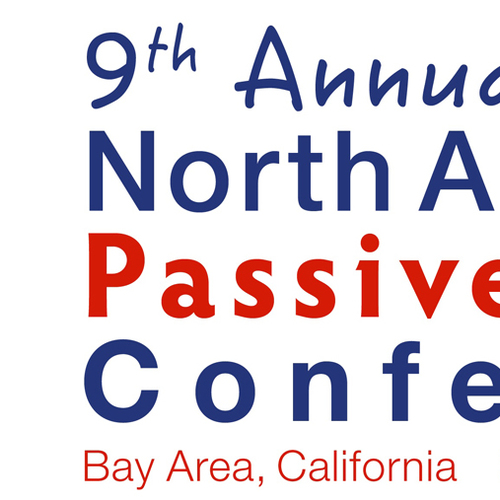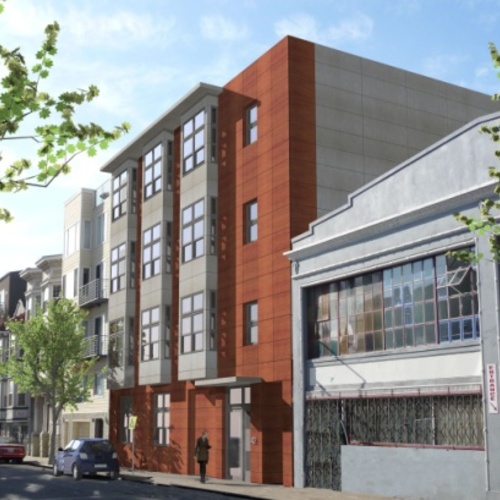Image Credit: San Francisco Waterfront Partners LLC
Image Credit: San Francisco Waterfront Partners LLC The 8 Washington development is designed to include 53,500 sq. ft. of recreation space, including tennis courts and swimming pools.
U.S. Green Building Council’s Leadership in Energy and Environmental Design certification program has once again attracted a mixture of criticism and curiosity, this time in relation to a luxury condominium project planned for one of the most scenic settings on the San Francisco waterfront.
The $345-million project, called 8 Washington, includes about 53,500 sq. ft. of recreation space, 29,600 sq. ft. of retail, and 165 condo units that are expected to list for between $3 million and $10 million apiece. Public transportation, including the Embarcadero entrance to the Bay Area Rapid Transit system, is steps away. The development plan calls for two waterfront parks where the public can bask in the breeze and take in the mostly unobstructed views, looking east, of San Francisco Bay. Topping things off, the marketing strategy of the developer, San Francisco Waterfront Partners LLC, includes building the project to the LEED Platinum standard.
Familiar talking points
Big construction projects – and even small ones – in San Francisco often attract media scrutiny, in addition to the attention they get from the Planning Department and Planning Commission. But an alternative weekly, the San Francisco Bay Guardian, recently focused on 8 Washington not only for the presumed extravagance of its eventual occupants but for touting its LEED Platinum ambitions. In an article published July 5, the typically progressive Guardian also highlighted what is sees as deficiencies in the LEED program, particularly when it’s applied to a project whose homeowners, as one observer put it, will “burn tons of fossil fuels using their new condos as weekend getaways.”
The Guardian cites criticisms of LEED familiar to most green builders, including the notion that even though addresses site use, water efficiency, energy use and atmosphere, materials and resources, indoor environmental quality, and innovation in design and regional priority, it is not yet geared to certifying its energy efficiency performance.
The Guardian also field comments from Henry Gifford, owner of Gifford Fuel Saving consultancy and lead plaintiff in a lawsuit alleging that USGBC misrepresented the performance of LEED certified buildings and altered study results to support its performance claims. Gifford argues in the Guardian that any rating service claiming to encourage energy efficiency needs to track energy usage in client buildings over time after they’re in full operation, a process that LEED has not yet imposed as a requirement for certification.
“They say that the building is required to be energy efficient. But the building doesn’t have to be energy efficient — it just has to earn points, to promise it’s going to be energy efficient,” Gifford told the paper. “California is the promise land. All you’re required to do is provide a promise. The sad thing is that it removes all the integrity from the process — it encourages lying.”
Weekly Newsletter
Get building science and energy efficiency advice, plus special offers, in your inbox.
















One Comment
reporting on problems with LEED
I'm a critic of LEED because the Olympic metal rating goals overshadow and distract from the design team having to prioritize address the greatest environmental impacts per the scope and type of each indivdual project.
When a project achieves LEED Platninum someone has spend a lot of time on the energy efficiency credit documentation. Hopefully the submitted documentation reflects what happens in the executed project but we'll never know because the USGBC only reviews submitted documentation and not the projects themselves.
LEED is at a size now that it has an inertia against making improvements to its system. I also think reporting on LEED has progressed very slowed merely reflecting the comments of critics most who don't know the details of each of the credits.
What would be useful is to make transparent the documentation for the main energy efficiency credit. What would be better yet is to analyze the difference between how the LEED system energy models a project and how the Passivhaus PHPP energy models a project. In the case of the PHPP the energy model attempts to make an accurate approximation of the actual heat loss and heat gain dynamics. The documentation for the LEED energy efficiency credits on the other hand compare the incremental improvement of a set of choices to go beyond status quo practices with a dummy configuration that creates a baseline of what is supposedly reflects 'what would have happened if it weren't a LEED building' as in 'our LEED building is 35% better than a baseline conditions constructed according the LEED documentation procedure for this energy credit.'
Log in or create an account to post a comment.
Sign up Log in